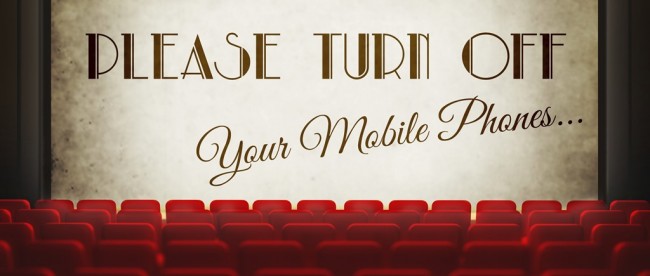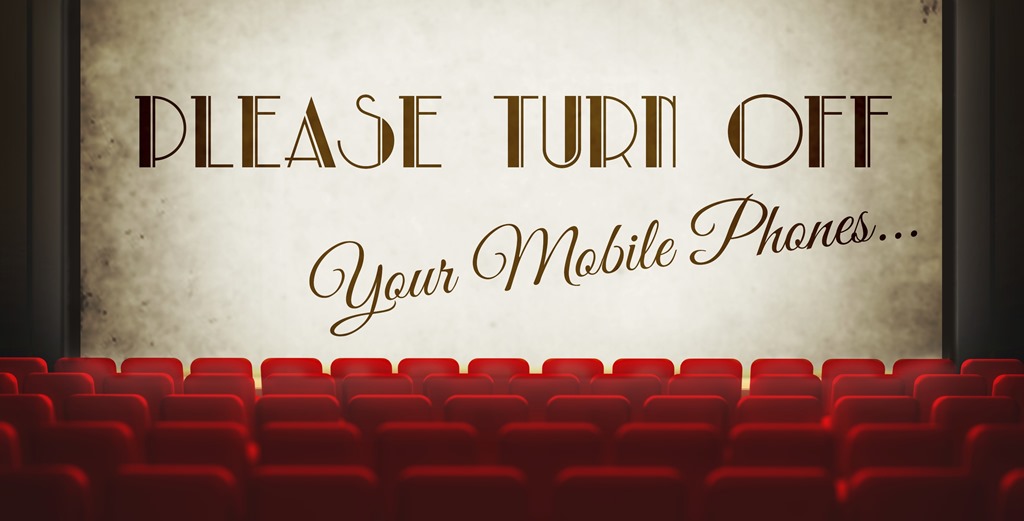Silence Lights


It’s an unfortunate yet familiar situation — you’re at a movie theater, having spent way too much money on your ticket and extraordinarily large popcorn and/or soda, and it happens: a cell phone begins to ring. That’s unacceptable, of course; according to a 2006 report in the Pittsburgh Post-Gazette, “only 2 percent say that using a cell phone in a movie or theater is acceptable.” (That’s up from 11% who said it was OK in 2000, per the same result.) That disdain was echoed by a more recent report — 2015 — which found that only “5 percent said it was OK to use a phone at the movies or in a quiet public place.”
But it’s hard to combat. We’ve tried pre-movie messaging begging viewers to silence or turn off their phones, but as most people who violate this norm do so accidentally, those aren’t all that effective. And for those who are simply checking email, they often don’t realize that the glow of the screen — even if the phone is otherwise silent — bothers their fellow theatergoers. Further, when it comes to live performances — musicals, operas, orchestral performances or the like — those performing may also be distracted.
So one theater in China has turned to a more aggressive approach:
Shame. Using lasers.
For years, many venues in China would position ushers in the aisles. If a theater-goer used a phone during the performance, ushers would run toward a guest, getting him or her to stop. That often resulted in unnecessary noise and extra commotion. So many Chinese theaters switched tactics. The idea is a straightforward one, as the New York Times summarized:
During a performance, ushers equipped with laser pointers are stationed above, or on the perimeter of, the audience. When they spot a lighted mobile phone, instead of dashing over to the offender, they pounce with a pointer (usually red or green), aiming it at the glowing screen until the user desists.
The laser-shaming tactic, as the Times described it, ensures theatergoer safety by only shooting the lasers from behind, minimizing the chance of accidentally hitting a patron in the eyes. And while some performance groups have objected (usually successfully), most seem to be OK with it — a laser dot from afar often isn’t much of a distraction. And for the infringing customer — especially the ones who just wanted to check in on Twitter or send a text — the “don’t do that!” reminder is quick and anything but subtle. Oh, and it disincentivizes others from making the same digital faux pas.
As a result, the tactic is usually successful. In fact, it may be coming to a theater near you at some point soon; just a few days after the New York Times article hit, the Jermyn Street Theater in London’s West End announced that it would employ the same anti-cell phone strategy.
Bonus fact: If you check out the above-linked New York Times article, it briefly mentions how lasers and airplanes interact: “there have been numerous incidents in which lasers aimed at cockpits have impaired pilots’ ability to fly safely.” What’s the big deal? As Mental Floss explains, a laser “originating from the ground not only reaches the cockpit of planes, it’s also magnified considerably by their Plexiglas windows. The pilot’s field of vision is compromised as the light comes in bursts, a strobe effect the FBI has compared to setting off a camera flash in a dark room. At distances of up to 1200 feet, it can engulf a cockpit. It remains a distraction hazard all the way up to 12,000 feet.” Here’s a video, via RT, demonstrating.
From the Archives: Acoustic Kitty: Check out the bonus item.
Related: A laser pointer (and presentation remote). Please, do not shine it at airplanes, helicopters, fellow movie or theater-goers, or anyone else.
